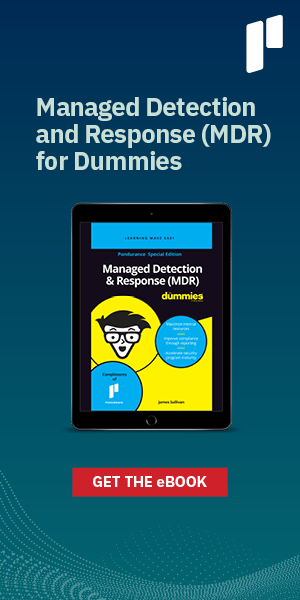The Human Element: The Key to a Successful Cybersecurity Strategy
Pondurance April 21, 2023
Organizations are turning to new technology, evolving security strategies, machine learning, and artificial intelligence (AI) to improve their cybersecurity posture in today’s landscape. In the midst of these technological advancements, it can be easy to lose sight of the most important factor in cybersecurity — the human element. Without a human-centric approach, many organizations lack the fundamental skills to defend themselves against the most sophisticated attacks, such as the Solarwinds breach that occurred in 2020.
The Human Element of Cybersecurity
A common pain point organizations continue to face is the lack of skills in the cybersecurity community. In fact, in a recent study, 70% of cybersecurity professionals stated their organizations are negatively impacted by the shortage of internal cyber skills and expressed increasing difficulty keeping their existing workforces engaged. However, midsize and enterprise organizations are not the only ones suffering from a lack of talent. A senior cybersecurity official at the Department of Homeland Security described the challenges associated with recruiting skilled cybersecurity talent as a “national security issue.”
Threat actors are humans. They leverage advanced technology such as machine learning and AI to both discover and take advantage of new vulnerabilities found in software, networks, and infrastructure.
It’s important that organizations understand that technology alone can’t stop attackers; it’s critical to invest in a cybersecurity workforce that can keep up with sophisticated threats. However, it takes significant time, money, and training to attract, retain, and develop these teams. As a result, organizations are turning to managed detection and response (MDR) services as a cost effective means of integrating the human element into their cybersecurity strategies. According to Gartner, by 2025 nearly 50% of organizations will be using MDR services to protect their business.
While armed with technology, cybersecurity teams need to be “people taking care of people”.
Real-Time Alerts Backed by Human Intelligence
Proficient alert management is a critical factor in climbing up the Detection and Response Maturity Model. Unfortunately, the vast majority of alerts go uninvestigated due to limited internal expertise — the human element — to both verify and block confirmed threats in real time. Triaging alerts can be a difficult task, especially when 41% of organizations are seeing upwards of 10,000 alerts every day, which puts them at a major risk of alert fatigue.
Real-time alerts backed by human intelligence can be achieved by utilizing a 24/7 MDR service that can act as an extension of an organization’s existing security team or as its only security team. The experts are tasked with investigating what happened on the network, understanding what it means, and taking prompt action against cyberthreats.

When the Human Element Meets Technology & Processes
While there is no substitute for human intelligence, understanding how to apply the human element to an organization’s existing technology stack and processes is essential to rapidly detect, analyze, investigate, and actively respond to threats. Most organizations are turning to MDR services for an optimized approach to integrating the human element with their technology and internal processes.
Technology is still a valuable tool to ensure 360-degree visibility across an organization’s digital landscape, allowing organizations to detect threats and anomalies that a sophisticated actor could evade. However, the technology must be managed and monitored by an MDR service that can integrate the human element, technology, and mature processes to act as a remote SOC ingesting logs, packets, and endpoint data and applying expertise, analytics, and threat intel to detect and proactively block threats throughout the customer’s environment.
Real-time cybersecurity defense backed by human intelligence is a critical piece that organizations are missing to succeed in today’s threat landscape. Learn more about selecting an MDR provider with our 5 Things to Consider When Choosing an MDR Provider eBook.
